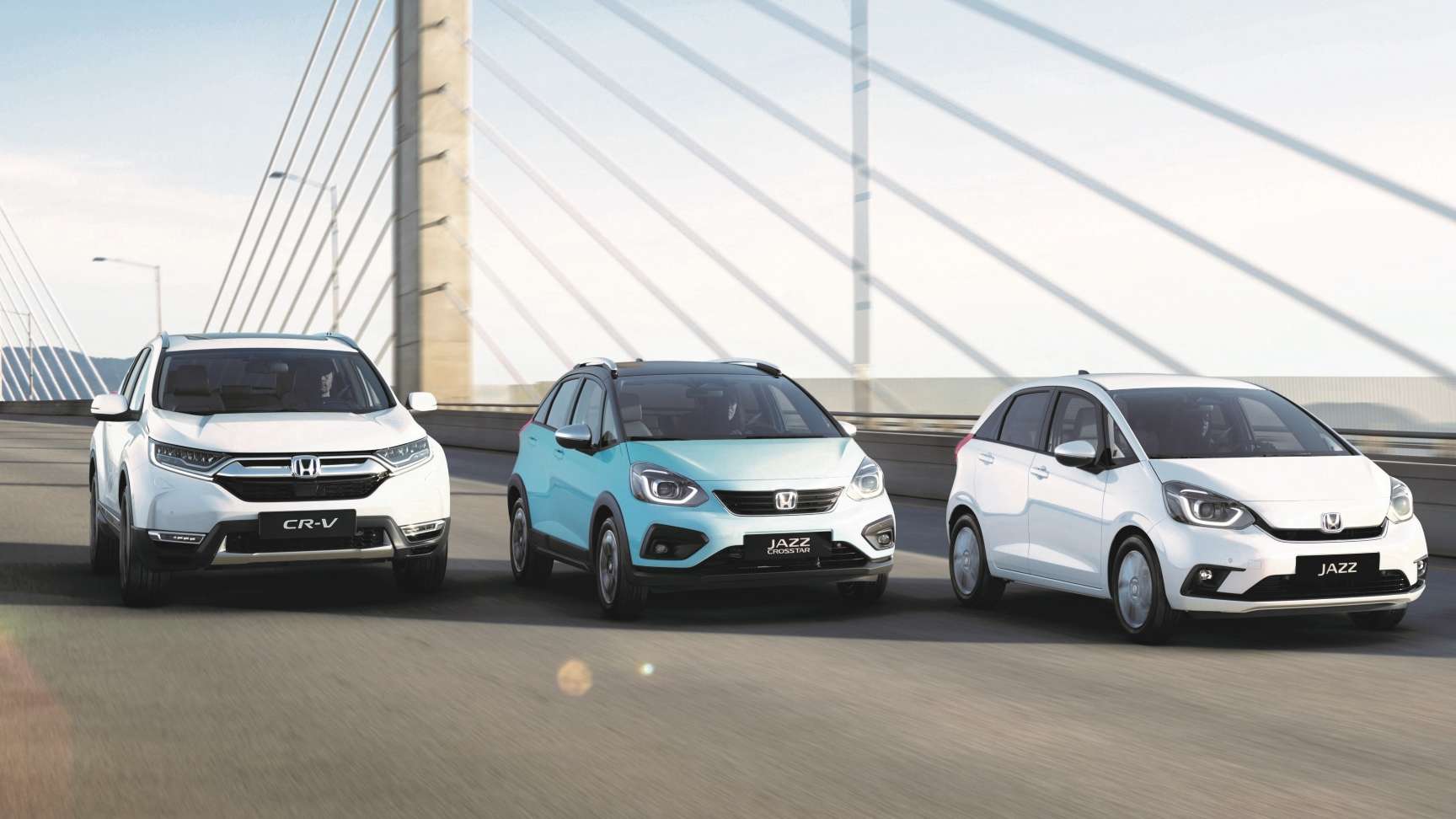.jpeg/jcr:content/renditions/m_r.jpeg)
5 ways Honda is cleaning up the future
By 2022, Honda plans to electrify its mainstream models in Europe. By 2040, it plans to sell only zero-emissions vehicles globally. And by 2050, the whole company and its products will be carbon neutral.
It's a big challenge, but Honda has a tradition of environmentalism: in 1999 it launched the world’s first globally available hybrid car, the Insight. And in 2014 it was the first car manufacturer to disclose CO2 emissions caused by its products.
Fast-forward to the present day, and Honda continues to make steps – little and large – towards its big targets. Read five ways Honda is setting the sustainability standard, as it strives towards ‘zero environmental impact'.
1. Electric and hybrid car batteries get a second life
By 2022, Honda commited 100% line up will feature electrified powertrains like battery-electric vehicles and self-charging hybrid. And with good reason.
Electric cars are the present and the future with the EU expecting 30 million on European roads by 2030 and environmental group Climate Brief saying they’re “an important part of meeting global goals on climate change .”
Recycling carbon-neutral electric cars are crucial to maintaining these environmental benefits. Most parts of an electric car can be recycled in the same way as standard vehicles.
The lithium-ion batteries, however, require a different approach. Since 2013, Honda Motor Europe has partnered with SNAM, an expert in reusing and recycling batteries. As a result, once a battery is no longer usable in a vehicle (end of life), Honda prepares it for a ‘second life’.
This second life uses batteries for renewable energy storage. They’re creating new batteries, too, with valuable materials such as cobalt and lithium extracted using complex chemistry and fed back into production.
2. Moving parts by road, rail and river
From highways to waterways, Honda uses the best transport method for the job, helping it build its cars in a greener way.
In a move praised by sustainability experts, it recently took to the canals of Belgium to transport parts between sites. The United Nations awarded its SDG Pioneer status to two Honda European logistics sites in recognition of their ongoing commitment to sustainability, wellbeing and corporate social responsibility (CSR).
Products and parts arrive at Antwerp, one of Europe’s three busiest ports . Using barges to transport them to Honda sites in Gent and Aalst instead of trucks reduces greenhouse gas emissions on the road. The initiative has saved more than 14 tons of CO2 since June 2019 .
3. Halving lifecycle emissions by 2050
Honda has set an ambitious target to significantly reduce emissions, as part of its wider repose to climate change. The goal? By 2050, it aims to halve total product lifecycle CO2 emissions (compared with 2000 levels) – equivalent to reducing tailpipe emissions by 80-90%.
Transparency around emissions is nothing new to Honda. Back in 2012, it became the first in the industry to disclose estimated CO2 emissions from product use. Since then, climate change has intensified the need to reduce emissions.
Another way Honda has responded has been to commit to an electric future. A recent study by Cambridge University found electric cars have up to 70% lower average lifetime emissions than petrol cars, in countries where most of the energy comes from renewable and nuclear sources, such as France and Sweden.
Such is Honda’s commitment to electric vehicles that by 2040, 100% of vehicles will be electric (EV and fuel cell). The all-electric Honda e is one of the latest-generation vehicles to have no tailpipe emissions, helping the brand halve its lifecycle emissions by 2050

4. Planting trees since the 1960s
Honda is committed to conservation and biodiversity, which put simply means the plants and animals in a part of the world.
Trees are hugely important to biodiversity because so much life is dependent on them – from birds and insects to small animals. In the 1960s, Honda started planting trees in its native Japan. It followed this up in the mid-1970s with its Community Forest Programme.
In 2011, Honda underlined its commitment by launching its own biodiversity guidelines. These recognised “that biodiversity conservation initiatives are an essential part of our commitment to the preservation of the global environment.”
5. Finding fuels for the future
Honda isn't just looking for one answer for fuelling the future. It's drawn up a pathway so all its products can be powered by renewable energy.
Take solar, hydro and wind power. The most obvious fuel is electricity, which can be fed into the batteries of all-electric cars like the new Honda e.
But electricity can be used to produce other fuels, too. Passing a current through water – electrolysis – creates hydrogen and oxygen. That hydrogen can be used to power fuel cell vehicles (FCV) like the Honda Clarity, which is being trialled in some markets.
Hydrogen’s potential doesn’t stop there. Mixed with recovered CO2, it becomes a synthetic fuel known as e-fuel, which can be used in vehicles with internal-combustion engines, ranging from the all-new HR-V hybrid to the HondaJet aircraft, and every motorcycle, snow-thrower and generator in between. Biomass-sourced biofuel can be used in the same way.
From planting trees in 1960s Japan to pioneering second-life use of electric car batteries, Honda’s commitment to the environment goes way beyond its electric cars.



.jpg/jcr:content/renditions/c4.jpg)

